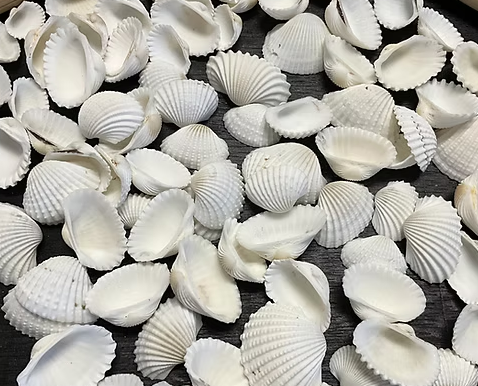When it comes to sourcing wholesale seashells, quality and price matter equally. Serious artists and crafters know a poor shell can ruin a project. At the same time, high costs can hurt budgets for large pieces or mixed projects. Picking shells that are both beautiful and affordable takes a keen eye and a practical approach.
Know Your Project Needs
The first step is deciding what your shells will be used for. Some projects call for small, detailed shells to fill backgrounds. Others need larger, statement shells for trays, frames, or décor pieces. Matching the size, shape, and texture of shells to the project ensures your finished piece has balance. A mismatched selection can distract from the design.
Color also plays a role. Natural, muted tones give a calm, coastal feel. Bright or patterned shells add visual interest and draw the eye. Choosing shells that suit the palette of your project helps every element work together without extra effort.
Inspect Shells for Quality
Even on a budget, quality should not be compromised. Check shells for chips, cracks, or holes that were not meant to be there. A minor flaw can reduce the shell’s durability. For larger shells, check that the surface is smooth and free of heavy scratches. Tiny imperfections may not matter in layered pieces, but visible damage can ruin centerpieces.
Weight and thickness matter too. Shells that feel too light may break easily. Thicker shells hold up better over time, especially in projects meant for display. Paying attention to these details ensures your pieces stay intact long after completion.
Sorting and Grading
High-quality wholesale shells often come sorted into grades. Artists and crafters should know what these grades mean. Grade A shells are usually the best for display pieces. They have vibrant patterns, consistent shapes, and strong structure. Lower grades may be fine for filler material or bulk projects, but they are not ideal for pieces that demand a polished look.
Sorting your shells before starting work saves time and reduces frustration. Separate by size, shape, and color. A well-sorted batch speeds up the creative process and helps achieve professional results.
Buying in Bulk Without Overspending
Bulk purchases can save money, but caution is necessary. Buying too much of one type can limit your creative options. Focus on variety while keeping costs in check. Mix natural, muted shells with small quantities of bright, patterned ones to make your work stand out.
Consider sets that are already mixed for size and color. These kits often offer more value than purchasing each shell separately. Buying smart ensures you have enough material for several projects without going over budget.
Storage and Preservation
Even high-quality shells can degrade if stored poorly. Keep shells in a dry area with low humidity. Avoid direct sunlight, which can fade natural colors over time. Using labeled containers helps maintain order. Group shells by type, size, and color. Proper storage keeps them ready for any project and prevents waste.
Cleaning shells before storage is also a good practice. Light brushing or rinsing removes sand and residue without damaging delicate patterns. Maintaining shells this way protects your investment and ensures consistency in your work
.
Practical Tips for Serious Crafters
Look for shells that match your typical project needs. If you often create seashell art, having a mix of sizes, shapes, and textures saves time. Choose flexible shells that can be layered, glued, or arranged without breaking easily.
Check for subtle details like natural spirals, grooves, and ridges. These add depth to artwork without extra effort. Even small differences in texture can make a big impact when pieces are layered or grouped.
Finally, keep a running list of shells that perform best for your projects. Over time, you’ll know which types hold up, which are easy to work with, and which give the most visual appeal.
Balancing Budget and Quality
Affordable shells do not need to compromise your design goals. Focus on core factors: shape, color, texture, and durability. Mixing higher-grade shells with budget-friendly options often produces the best results. You get the aesthetic appeal needed for showpieces and keep costs manageable for bulk projects.
Buying wisely is key. Think ahead, sort carefully, and store responsibly. Over time, these habits save money and improve the quality of every creation.
Conclusion
For artists and crafters looking for affordable yet high-quality shells, Spice Islands Coastal offers a range of options suited to serious projects. They focus on shells that are durable, visually appealing, and perfect for layered seashell art or statement décor. By carefully selecting, inspecting, and storing their shells, artists can create work that stands out without exceeding their budget. Their expertise ensures every batch of wholesale seashells meets practical and aesthetic needs, helping creators achieve professional results in every project.

